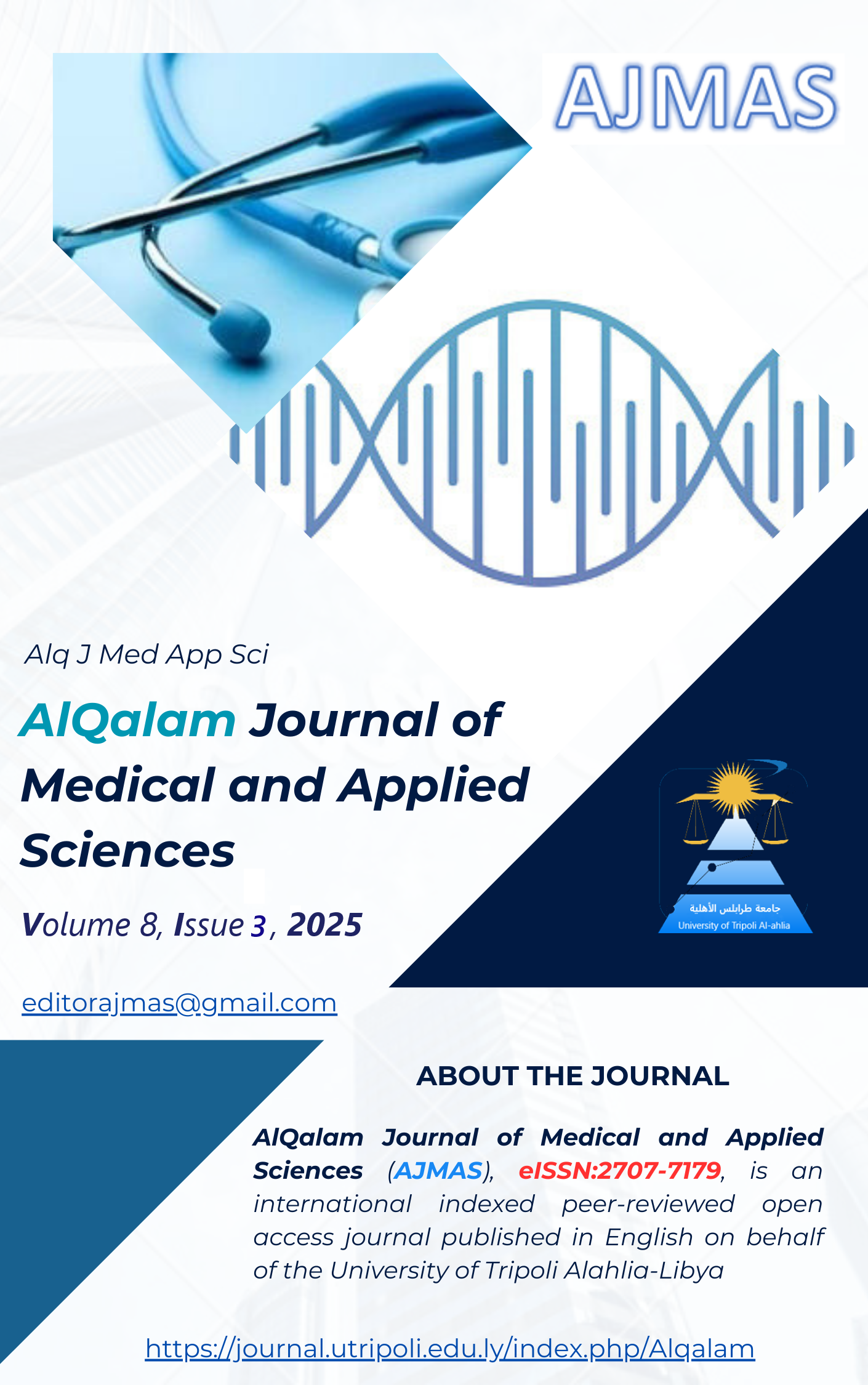Mortality Rates and Associated Factors in a Mixed Neonatal and Pediatric Intensive Care Unit Admissions at Zawia Medical Center, Libya
DOI:
https://doi.org/10.54361/ajmas.258369Keywords:
NICU, Pediatric ICU, Mortality, Sepsis, Prematurity, Libya, Neonatal Mortality, Risk Factors.Abstract
Neonatal and pediatric intensive care patients are among the most vulnerable populations, with high mortality rates, particularly in developing countries. This study was conducted to determine mortality rates and associated factors among ICU admissions at Zawia Medical Center, Libya. A retrospective cohort study was conducted using ICU records from January to December 2024. All pediatric (29 days to 15 years) and neonatal (≤28 days) ICU admissions were included, except those with incomplete records. Data were collected, cleaned, and analyzed using descriptive and inferential statistics (Chi-square, t-tests, ORs). A total of 262 ICU admissions were analyzed (neonates: 139; pediatric: 123). Overall mortality was 13%, significantly higher among neonates (24.4%) than pediatric patients (2.9%). Leading causes of admission included respiratory distress syndrome and neonatal jaundice in neonates, and pneumonia and diabetic ketoacidosis in pediatric patients. Key mortality predictors included the need for ventilatory support (OR 280 for neo-nates), blood transfusions (platelets OR 12.8, FFP OR 11.9), prematurity (OR 0.42), cesarean delivery (OR 4.25), and inter-hospital referral (OR 16.3 in neonates). ICU mortality was high, particularly among neonates. Respiratory failure, sepsis, and need for transfusions were major contributors. The study highlights the need for improved referral processes, perinatal care, and the establishment of a national registry to standardize and enhance neonatal and pediatric critical care in Libya.
Downloads
Published
How to Cite
Issue
Section
License
Copyright (c) 2025 Mufeeda Salim Mansour

This work is licensed under a Creative Commons Attribution 4.0 International License.














